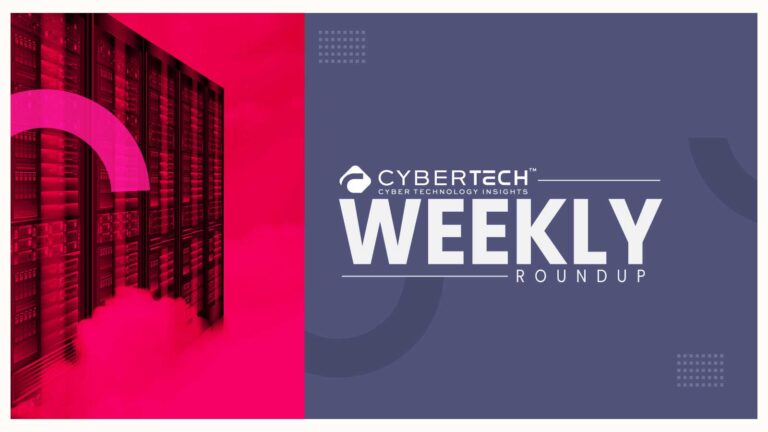DXC Technology and Microsoft have made public a cybersecurity report, which indicates that Zero Trust security is being widely adopted at an impressive pace, while the implementation of AI security is significantly lagging. The Trust Report: From Risk Management to Strategic Resilience in Cybersecurity states that 83% of organizations that have adopted Zero Trust have achieved containment of security incidents. Meanwhile, AI-driven authentication tools are reportedly used at only 30% of enterprises. This highlights a significant gap in security adoption trends. This research, which surveyed over 100 cybersecurity experts from four continents on October 9, 2025, illustrates growing enthusiasm for balancing Zero Trust models with AI-driven defense initiatives to secure enterprise systems.
According to recent research by DXC Technology and Microsoft, organizations adopting Zero Trust frameworks have reduced security incidents by 83%. While this finding highlights the positive impact of Zero Trust, a direct prediction from Gartner stating that “by 2026, 70% of organizations will implement Zero Trust frameworks across critical enterprise systems” is not available in the search results.
Why Zero Trust Security Matters More Than Ever
The report, among other things, concludes that AI, when used offensively, can accelerate how attackers bypass traditional security controls, thus making Zero Trust Security the most viable alternative as a security model for internal systems, applications, data, and networks.
Key takeaways from the report:
- 66% of organizations reveal that they struggle with legacy systems when trying to adopt Zero Trust.
- 72% of respondents state that the most important factor that leads to the adoption of a Zero Trust stance is the constantly changing nature of threats.
- Moreover, the report extends the survey theme by finding that, among those surveyed, the predominant view is that Zero Trust not only guarantees higher security when introduced but also makes the user experience better.
Zero Trust is increasingly recognized as the future standard for enterprise security, said Dawn-Marie Vaughan, Global Offering Lead Cybersecurity, DXC. There are so many AI-driven attacks happening so quickly that organizations really need to do a very deep and comprehensive security check – from identity to devices, networks, applications, and data.
The Untapped Potential of AI Security Tools
While implementing Zero Trust will bring in a stable base for the system, the study suggests that AI security tools have a lot of potential that is not being realized. The AI-powered authentication, risk-based threat detection, and behavioral anomaly tracking, along with their unauthenticated use, are the main reasons that there is a very large room for organizations to take advantage of these tools to act as a shield for themselves.
Benefits of combining AI with Zero Trust:
- Proactive threat detection: Through learning, the system may anticipate and uncover malicious activities before attackers succeed.
- Reduced remediation costs: Rapid reaction to incidents leads to higher profits resulting from the saving of working time, and hence, more operational sustainability is achieved.
- Enhanced resilience: Automated security helpfully jumps to a more advanced stage in the zero-trust security integration strategy, thus adding another layer of protection and better solutions to counterattack network threats and vulnerabilities.
“When Zero Trust solutions are built with the support of DXC, clients not only gain access to a wider range of features but direct exposure to the managed services; they also benefit from simpler operations and management,” said Alex Simons, CVP, Microsoft Entra.
Challenges in Zero Trust Adoption
Zero Trust is not something that can be implemented in one go; rather, it’s a continuous journey. An organization not only must put it into practice in identity, devices, networks, applications, and data, but also has to make sure that the security culture of the organization is conducive to it.
Best practices for adoption:
- Start the process of transformation by focusing on identity management and access control.
- Roll out an AI-powered security program that is sensitive to the threat changes.
- Continuous revision of existing policies to deal with cyber threats will surely set organizations apart.
- Leverage strategy engagements with the DXC International and Microsoft service for better deployments.
“Our complete lifecycle technologies, along with our knowledge of conversational AI, allow the customer, simultaneously, to keep AI security at the optimal level while exploring all possible operational …” Dawn-Marie Vaughan added.
Expert Insights & Strategic Implications
This document, among other things, exemplifies the trend of the present happening on a large scale within enterprise cybersecurity. The implementation of Zero Trust leads to a scenario in which fewer security events occur, and at the same time, the costs of administration go down.
Moreover, a very bright spot on the AI map is cybersecurity. The domain will grow prolifically with diverse breakthroughs. The key insight is that the greatest advantage lies in predictive threat response.
Besides, the integration of AI with the core concepts of Zero Trust will not only allow companies to be at the forefront of the constant battle against cybercriminals but also ensure that they maintain safety even in the future when the landscape changes. Gartner research emphasizes that integrating AI into Zero Trust strategies increases threat detection coverage by 50% over traditional approaches,” to highlight strategic implications.
Key Takeaways
- One of the most prominent cybersecurity trends worldwide is the steady global adoption of the Zero Trust framework.
- One of the factors to consider is that AI-based security tools still have a long way to go before they reach their full potential. As time goes by, these security tools will find and activate new methods of securing their clients through a number of active measures.
- On top of that, it is also necessary to underline that the process of constant scrutiny, cultural embracing, and reliance on a few trusted partners as integral components and part of the non-negotiable factors is not that far away from being the end of the journey.
Furthermore, in addition to this, the companies that decide to mix these drives will not be the only ones witnessing the decrease in crime rates, but also the firms experiencing the increase in cost-effectiveness and the stability of the future economy.
Conclusion
The results of research have indeed pointed out that Zero Trust security is extremely reliable, and 83% of the cases where it was adopted have led to a decrease in security incidents. Besides, there is a big part of AI-based cybersecurity that is not yet fully activated, so a great number of security tasks can be conducted. Consequently, those organizations that have taken the decision to implement Zero Trust together with AI tools will not only be enabled to overcome the challenges of the future but also reduce cybersecurity budgets and upgrade security measures at their organizations.
FAQs
Q1: What is Zero Trust security?
A1: Zero Trust is a network security model that relies upon the principle of no trust to every user and device, even if they belong to the internal network. The model’s three core elements,i.e., Network segmentation, least privilege, and continuous verification, intend to protect users, data, and services from all types of attacks, irrespective of their origin, either inside or outside.
Q2: Why are AI security tools underperforming?
A2: Security AI tools tend to function below their capabilities mainly because of factors such as ongoing reliance on legacy systems, budget constraints, and a shortage of qualified personnel, all of which lead to difficulties with setting up AI-based authentication and adaptive threat detection solutions in organizations.
Q3: How does AI help Zero Trust security?
A3: AI-powered technologies do this by constantly monitoring normal operations, spotting irregularities, quickly removing the perpetrator’s access, and continuously enforcing policies as they adapt to emerging threats, thus making the Zero Trust frameworks one step ahead of the attackers.
Q4: What are the main challenges in adopting Zero Trust?
A4: The major challenges of integrating Zero Trust with the existing security architecture are the ever-changing cybersecurity threats and the need for organizations to alter their perception and approach towards security risks. The identity management process can be started first, and step by step, the implementation moves further.
Q5: How can organizations discover more about the Zero Trust with AI?
A5: Businesses can gain a deeper understanding of these technologies, the best practices in the field, and the opinions of experts by consulting sources such as DXC Technology, Microsoft Entra, and the NIST Zero Trust Architecture document.
For deeper insights on agentic AI governance, identity controls, and real‑world breach data, visit Cyber Tech Insights.
To participate in upcoming interviews, please reach out to our CyberTech Media Room at sudipto@intentamplify.com.



